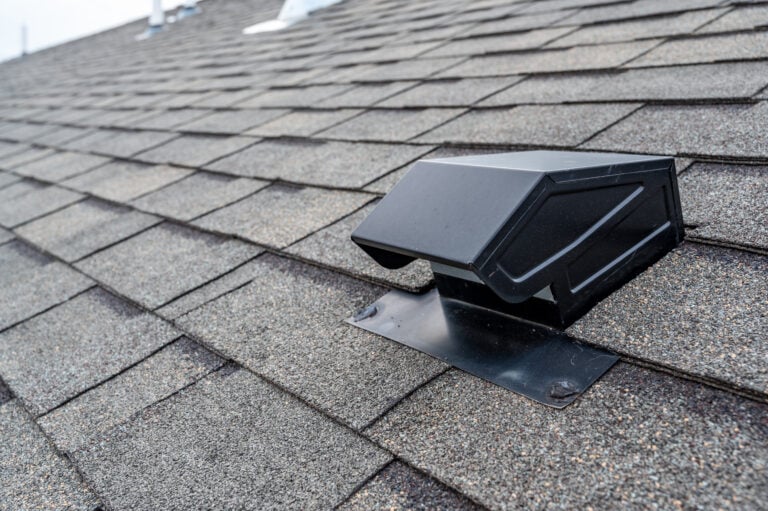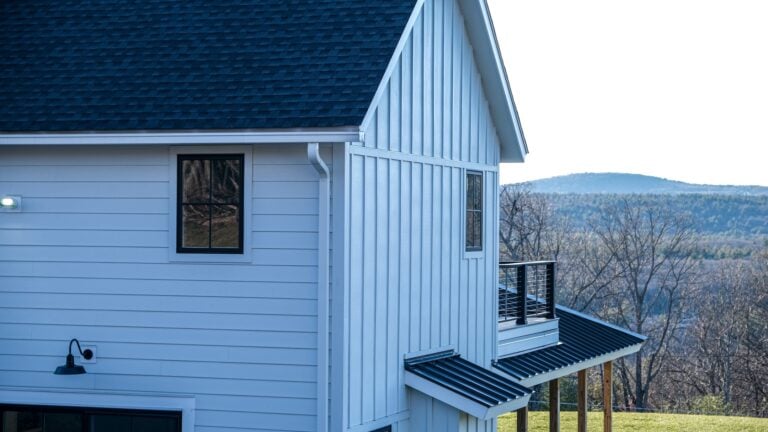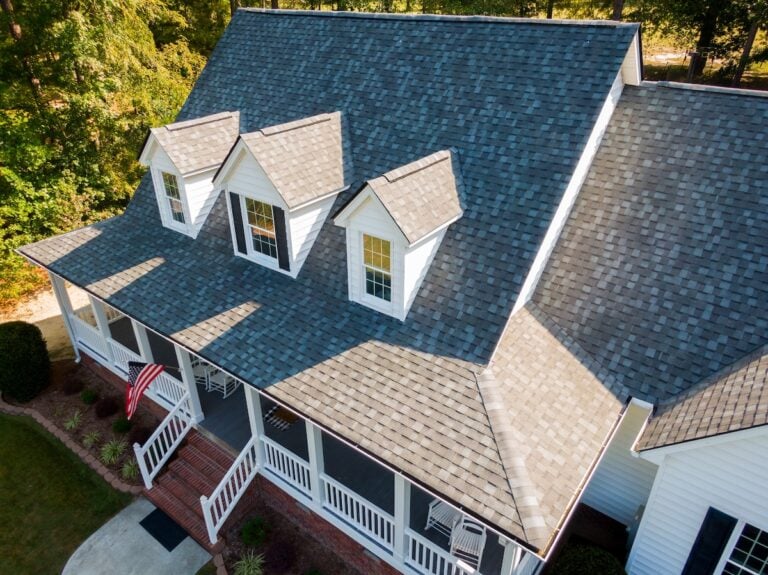Your roof stands as your home’s first line of defense against the elements. Every day, it faces harsh weather conditions, temperature fluctuations, and environmental stressors that can lead to various forms of damage. Understanding the most common types of roof damage helps you identify problems early and take action before minor issues become major headaches.
Whether you’re dealing with storm damage, wear and tear from aging materials, or problems caused by poor installation, recognizing these issues quickly can save you thousands of dollars in repairs. This comprehensive guide covers:
- How to spot roof damage
- 7 most common types of roof damage
- Maintenance-related damage
- Biological and environmental factors
🔎 How to Spot Roof Damage
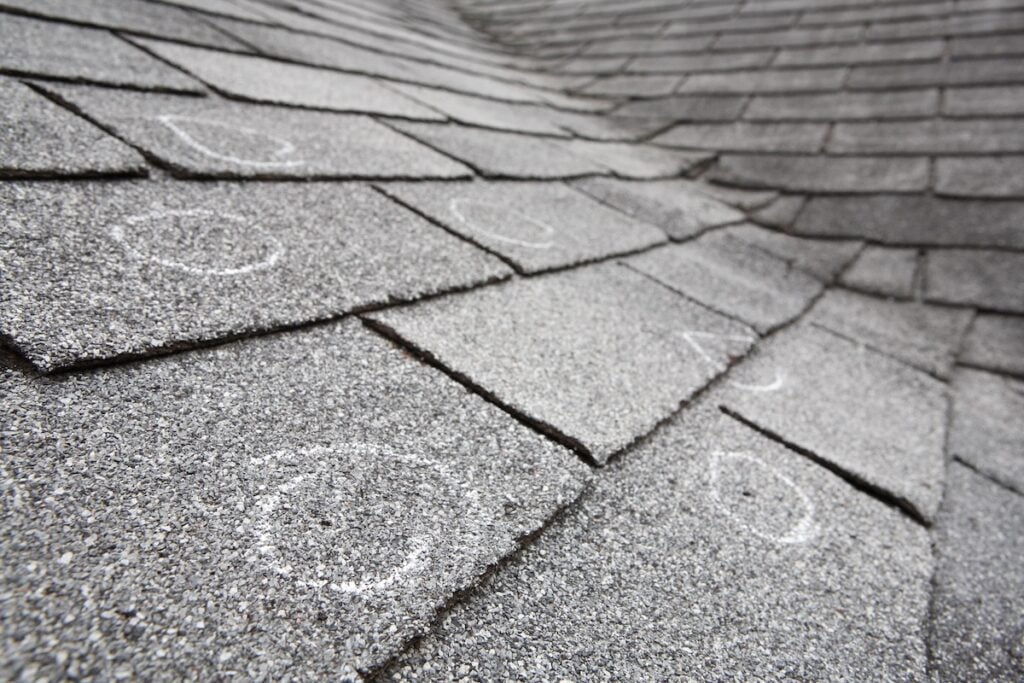
Identifying roof damage early is key to preventing more significant issues down the line. A damaged roof can lead to leaks, energy inefficiency, and even structural compromise if left unaddressed. Regular inspections and knowing what to look for are essential steps in maintaining your roof’s integrity.
Signs of Roof Damage to Watch For
Here are some common indicators of roof damage that you can spot during a visual inspection or after severe weather events:
- Missing or damaged shingles – Look for shingles that are cracked, curled, or completely missing.
- Water stains or leaks – Check for water spots on your ceiling or walls, which may indicate a leak.
- Granule loss – If you see excessive granules in your gutters or downspouts, it could signal aging or damaged shingles.
- Sagging roof areas – A sagging roofline may point to structural problems or water pooling on the roof.
- Damaged flashing or seals – Inspect areas around chimneys, vents, and skylights for cracks or gaps in the flashing or seals.
- Moss or algae growth – These can trap moisture against the roof surface, accelerating damage over time.
⭐️ 7 Most Common Types of Roof Damage
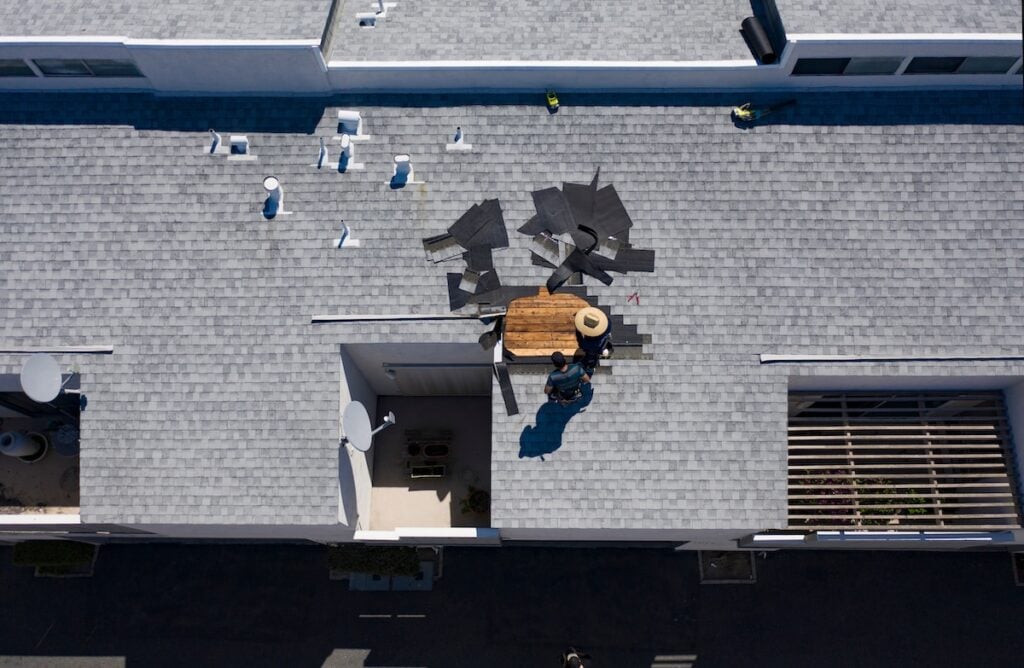
Based on our experience serving Columbus area homeowners, here are the most frequently encountered types of roof damage:
1. Missing or Damaged Shingles
Shingles act as the first line of defense for your roof, protecting your home from weather elements like rain, wind, and sun. High winds, aging materials, and improper installation are the most common culprits behind shingles becoming loose, cracked, or blown off entirely. When shingles are missing, they leave the roof deck exposed to moisture, which can seep into the underlying layers. Over time, this exposure can lead to rot, mold growth, and damage to nearby shingles, further compromising your roof’s integrity. Regular inspections and timely repairs can prevent small shingle issues from escalating into costly roof replacements.
2. Leaks and Water Damage
Roof leaks are one of the most common and damaging roofing problems. They often occur due to damaged flashing, missing shingles, or worn seals around roof penetrations like chimneys, skylights, and vents. Even small leaks can lead to significant consequences, such as interior water damage, mold growth, and the deterioration of wooden structures in your home. Often, leaks go unnoticed until they cause visible problems like water stains on ceilings or walls. Addressing leaks promptly and performing routine maintenance can help prevent major structural and financial damage.
3. Granule Loss
Granules are the tiny, sand-like particles that coat asphalt shingles, providing both durability and UV protection. Over time, granule loss can occur due to aging, weather exposure, or storm damage. When you notice granules accumulating in gutters or on the ground, it’s often a sign that your shingles are nearing the end of their lifespan. Without adequate granules, your roof becomes more vulnerable to UV rays, which can weaken the shingles and shorten your roof’s lifespan. Catching granule loss early can help you plan for repairs or replacements before more extensive damage occurs.
4. Flashing Deterioration
Flashing is a critical component of your roof, sealing the joints and edges around vulnerable areas like chimneys, vents, skylights, and roof valleys. However, flashing can deteriorate over time due to weather exposure, rust, or improper installation. Metal flashing can corrode and separate, while rubber flashing may crack, shrink, or lose its seal. Damaged flashing is a common source of leaks, as it allows water to seep into your home. Regularly inspecting and maintaining flashing can help ensure a watertight seal and prevent costly water damage.
5. Gutter Problems
Gutters play a vital role in directing water away from your roof and foundation. However, clogged, damaged, or poorly functioning gutters can cause water to back up onto the roof. This can lead to water infiltration, rot, and damage to roofing materials. In winter, poor drainage can result in ice dams, which trap water under the shingles and increase the risk of leaks. Proper gutter maintenance, including cleaning and ensuring they are securely attached, is essential to protect your roof and home from water-related issues.
6. Punctures and Impact Damage
Your roof can sustain punctures and impact damage from falling tree branches, hail, or airborne debris during storms. These issues create immediate risks for leaks and reduce your roof’s ability to withstand future weather conditions. Punctures may initially appear minor but can allow water to infiltrate the inner layers of the roof, leading to more extensive damage over time. Trimming nearby trees and inspecting your roof after severe weather events can help catch and address punctures before they worsen.
7. Sagging or Structural Issues
A sagging roof is often a sign of deeper structural problems, such as inadequate support, prolonged water damage, or excessive weight from accumulated snow or debris. Sagging affects the roof’s drainage, causing water to pool in certain areas and increasing the risk of leaks. Additionally, sagging poses a significant safety hazard, as it may indicate that parts of your roof are at risk of collapsing. Addressing sagging promptly through professional inspection and reinforcement can prevent further damage and ensure your roof remains safe and functional.
🛠️ 6 Steps to Repair Roof Damage
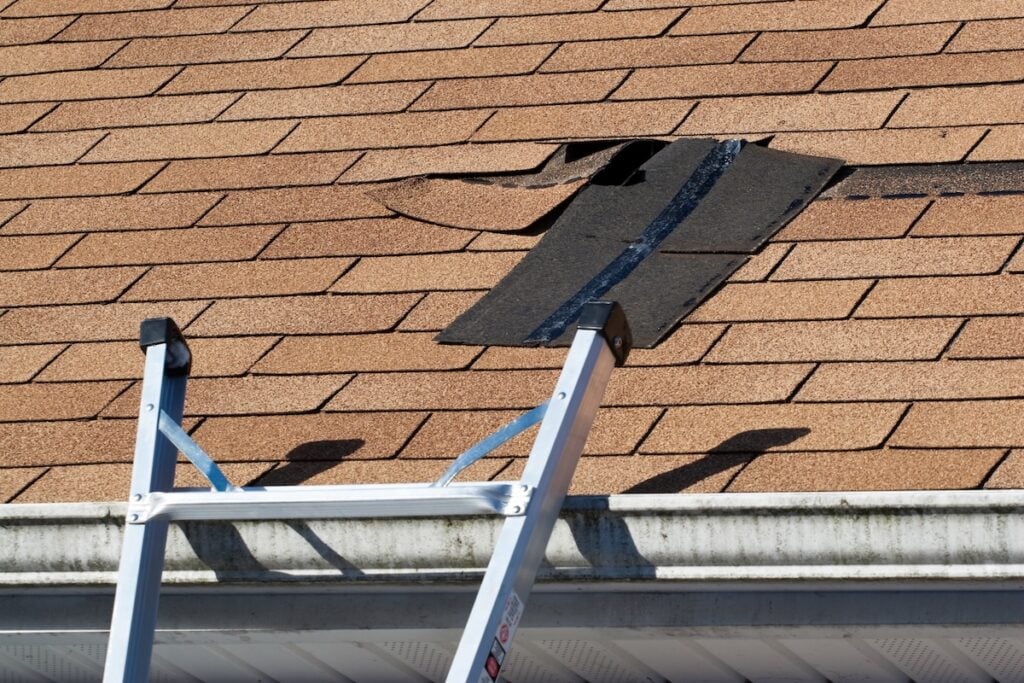
Repairing roof damage promptly is crucial to prevent leaks and further structural issues that could lead to costly repairs. A well-maintained roof also protects your home and ensures safety for everyone inside.
1. Inspect the Roof
Begin by thoroughly inspecting the roof for damage. Look for missing or damaged shingles, leaks, clogged gutters, or any signs of water pooling. Identify all problem areas before starting repairs.
2. Clean the Area
Clear any debris, such as leaves, branches, or moss, from the damaged areas. Use a broom or leaf blower for larger debris and a soft brush or cleaning solution for moss and algae. This ensures a clean surface for repairs.
3. Fix Clogged Gutters and Drainage
Unclog gutters to restore proper water flow. Remove leaves, debris, or ice buildup, and flush the gutters with water to ensure they are clear. Consider installing gutter guards to prevent future clogs.
4. Replace or Repair Damaged Shingles
Remove any broken or missing shingles and replace them with new ones. Secure them with roofing nails and seal edges with roofing cement to prevent water infiltration.
5. Address Water Damage
If water has seeped into the fascia boards, underlayment, or foundation, repair these areas promptly. Replace damaged fascia boards and inspect for potential leaks under the shingles.
6. Prevent Future Issues
To avoid future damage, perform regular maintenance, including gutter cleaning, debris removal, and roof inspections. Install protective measures, like gutter guards, and trim overhanging branches near your roof to prevent debris accumulation.
👨🔧 Why Choose Best Exteriors for Your Roofing Needs
When your roof shows signs of damage, choosing the right contractor makes all the difference in protecting your home and investment. At Best Exteriors, we bring years of experience serving Columbus area homeowners with honest, professional roofing services.
Don’t wait until minor roof damage becomes a major problem. Contact Best Exteriors today for a free consultation and let our experienced team assess your roof’s condition. We’ll provide you with honest recommendations and quality solutions to keep your home protected for years to come.

